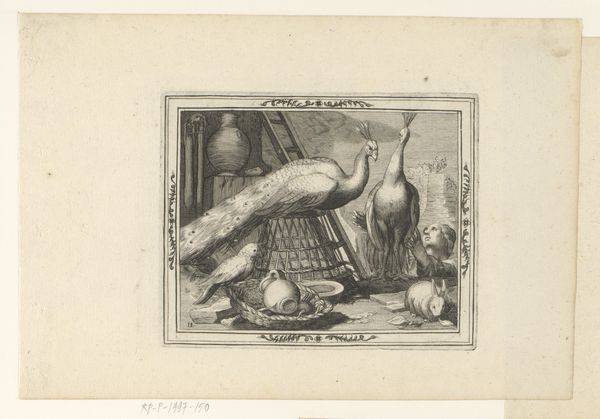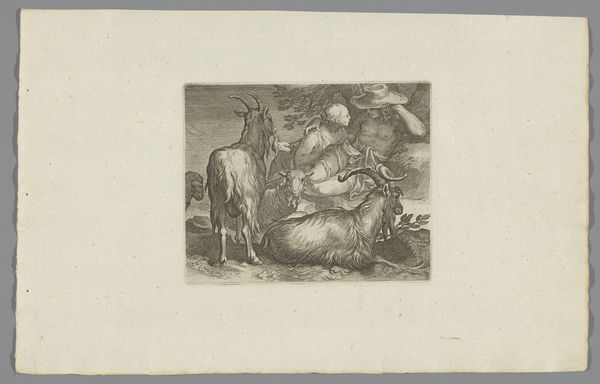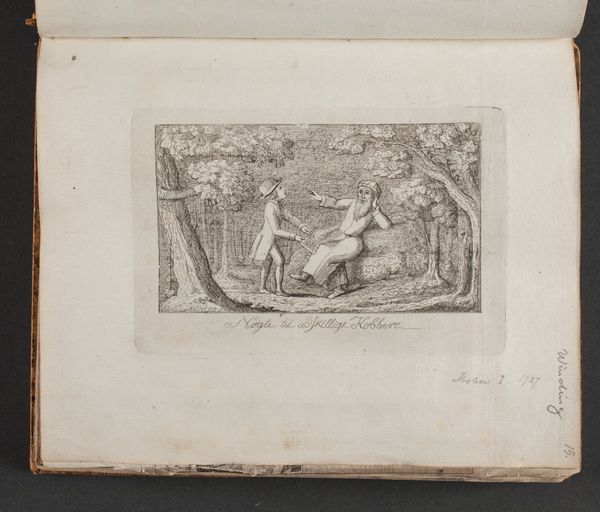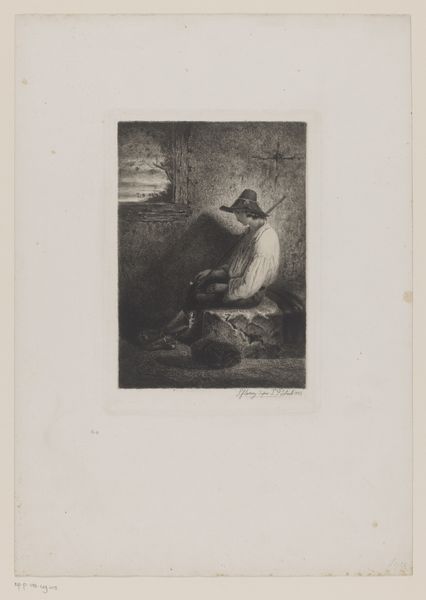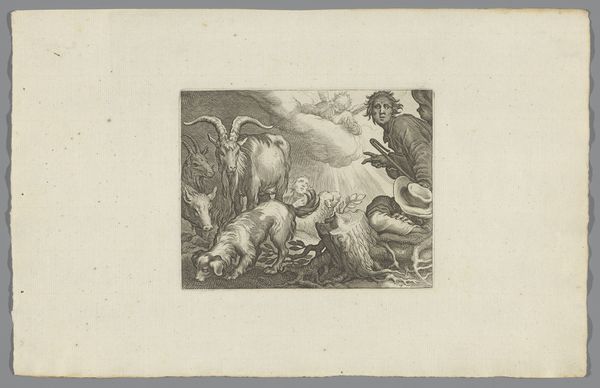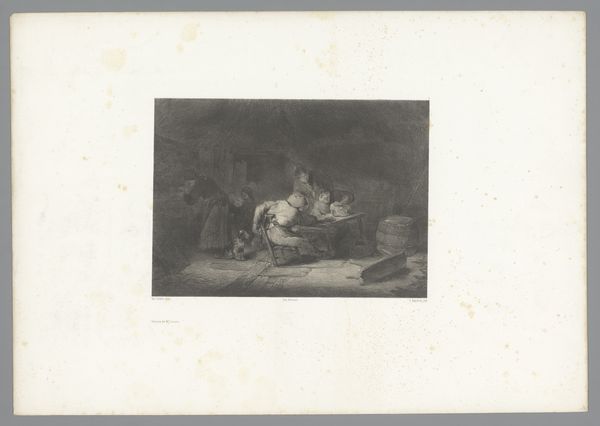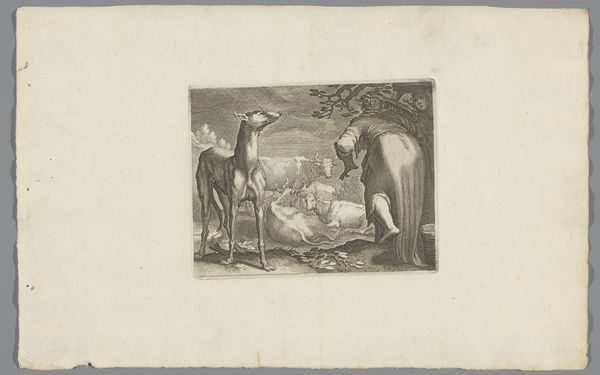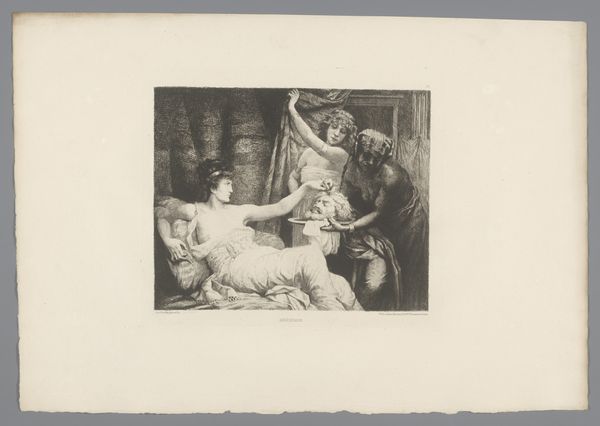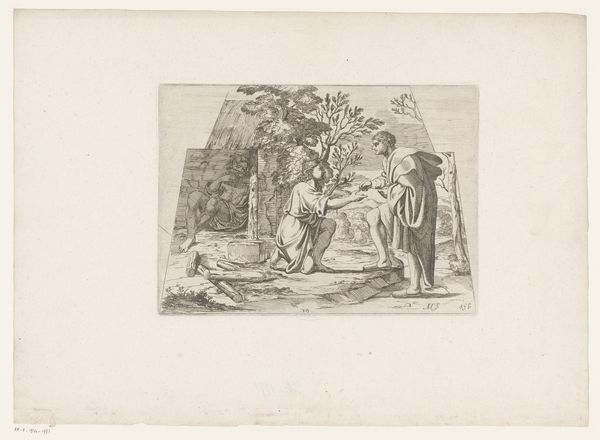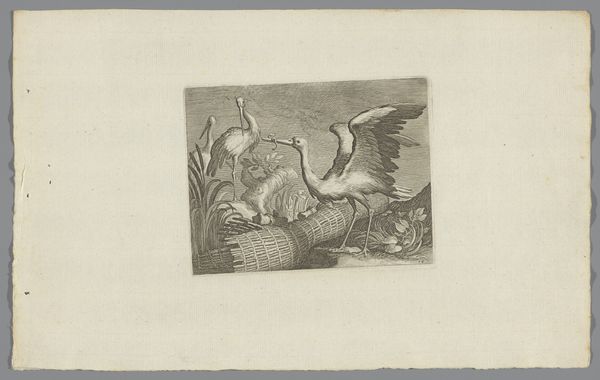
print, etching, engraving
#
baroque
# print
#
etching
#
northern-renaissance
#
engraving
Dimensions: height 112 mm, width 143 mm
Copyright: Rijks Museum: Open Domain
Editor: Here we have "Peacocks, Rabbit and Parrot," a print by Boëtius Adamsz. Bolswert, made sometime between 1611 and 1732. The array of animals gives a feeling of abundance. How do you interpret this gathering? Curator: It's fascinating how this assembly speaks to cultural memory. The peacock, historically a symbol of vanity and pride, is here juxtaposed with a rabbit, often linked to fertility, and a parrot, an imitator. Notice also the figure looking upward to the peacocks, in seeming supplication. The animals could symbolize an allegory of the senses, particularly sight and hearing, combined with ideas of mortality, since rabbits can symbolize vulnerability. What would such a collection mean to a seventeenth-century viewer, I wonder? Editor: So it's not just a charming menagerie? Curator: No. Consider how prints like these circulated. They became part of a shared visual language. The ladder in the background and assorted objects may symbolize ascension or reaching towards heaven, so even humble animals might symbolize more than what is apparent. Think about how people interacted with animals at this time - their inherent nature but also as metaphor. Does that change how you perceive the piece? Editor: It does! The image seems richer, filled with these symbolic connections and potential interpretations. I thought it was just pretty animals! Curator: That initial, instinctual response is also important. These images work on many levels, connecting our own contemporary cultural memories to the artist’s time.
Comments
No comments
Be the first to comment and join the conversation on the ultimate creative platform.

